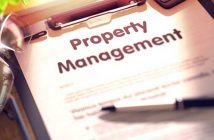When it comes to an investment property, both seasoned investors and newbie investors alike are usually looking for the same things and there are several desirable traits that an investment property should have, but generally, what you’re looking for falls under these three categories
Claire Warin – The Property Crowd

Location, location, location
When selecting a property, it’s important to consider the location. Firstly, is there demand for rental houses in the area you’re considering? If people don’t want to live there and there’s no demand for rental properties, then you’re onto a loser before you’ve even begun.
This goes hand in hand with also considering how easy the property is to let. Do tenants want to live in the area? Are there schools, transport routes and amenities nearby that make it a desirable location?
Is the suburb safe and well established? This will come into the financials too as it is important to consider whether or not the area you choose lends itself to the value of homes increasing. Check the statistics for the area so you can see how property prices have fared over time.
A cheap house in an affordable suburb may be appealing but it could mean lower rents, poor capital gains, increased maintenance and higher tenant turnover.
The property itself
Low maintenance is the key here. Investors want their properties to be as hands-off as possible. This means less money needs to be spent on the property. Plus, if you’re providing a well-maintained property that isn’t falling apart, tenants are more likely to stick around for longer.
‘Brick and tile’ is a phrase that’s used a lot as it’s often considered the bastion of a sound investment property. A brick exterior and tile roof are traditionally as low maintenance as you can get and will require little remedial work over the years.
A modern, or recently renovated, property with a good standard of fixtures and fittings is likely to be a sound choice.
Getting a building inspection to ensure the house is structurally sound and fully council compliant is also critical to ensure you’re choosing the right property.
While an early 1900s villa may look romantic and inviting, you’re looking down the barrel of a high-maintenance house. Wood rots, metal roofs degrade and leak, old foundations can start to sink.
Another style to avoid is plasterboard homes. Thanks to poor building standards and a litany of errors in the early 2000s, plasterboard homes have given rise to the leaky home crisis and this is a saga that no investor wants to face.
A meth test is also essential. While the reported dangers of living in a meth house have recently been called into question, positive meth tests can still cause issues with attracting tenants and insurance claims. There can also be repercussions with the tenancy tribunal.
It may be worth it to you to decontaminate the house before letting it, but make sure you have all the facts first.
The financials
Ensuring that a potential investment property checks out financially is key.
The first thing to consider is yield. That means the return you get on the property after all the expenses are paid.
There are some excellent yield calculators online which allow you to input the cost of the property, the weekly rental income, rates and insurance as well as projected maintenance costs. The final figure provides you with your yield – the percentage of return.
When looking at the finances it’s also important to consider how you will manage if there’s any significant amount of time between tenants. How will you cover the property’s expenses during this period? Or, more importantly, have you chosen a property that is unlikely to have time between tenants?
When choosing an investment property, it’s critical to take the emotion out of it and think solely about what will offer a sound, low maintenance property that is easy to rent out and will result in a financial return.



